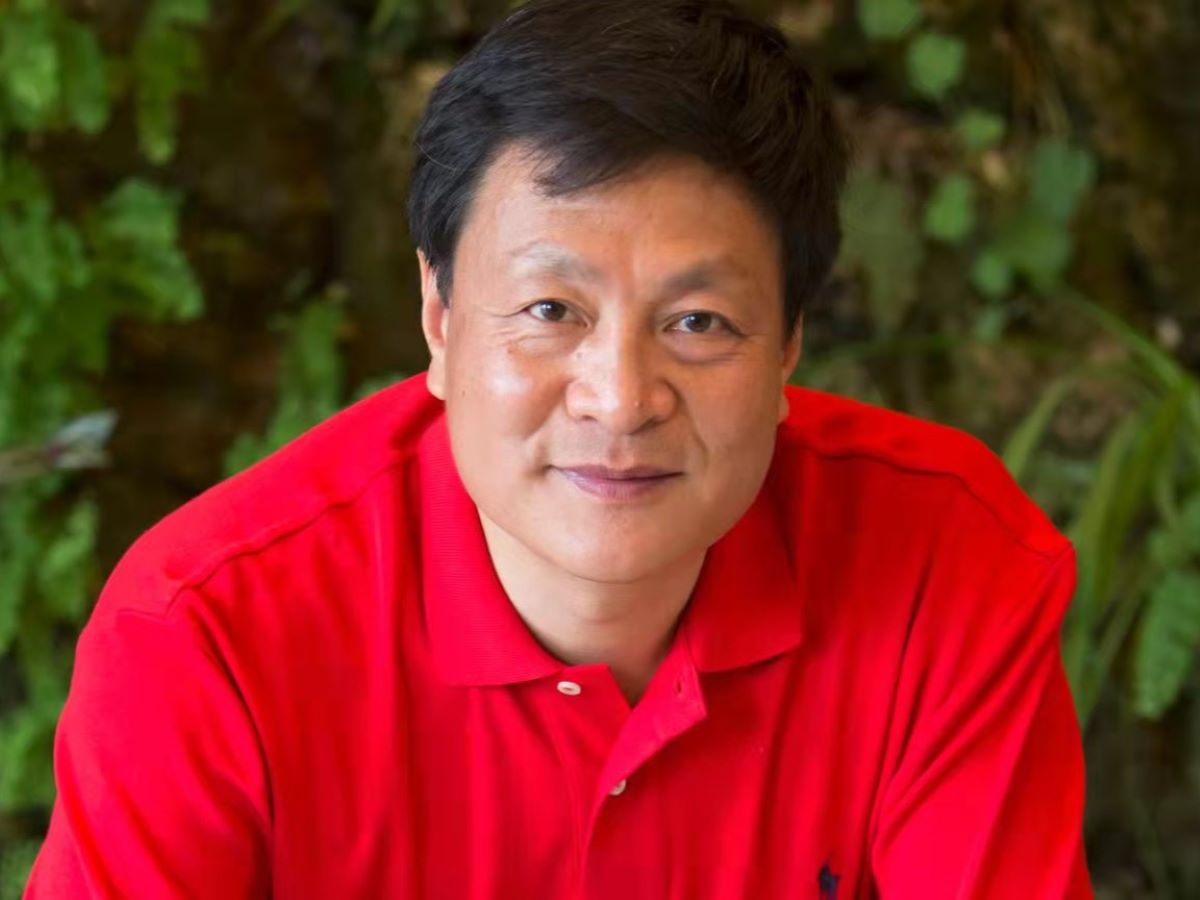This article is part of our thematic channel The Water Observer. Click here to subscribe to our newsletter and receive exclusive contents from the world of water
The concept of sponge cities, a nature-inspired solution, is increasingly recognized as a sustainable alternative to traditional grey infrastructure in urban areas − pipelines and concrete systems commonly found in developed countries, including Europe and America. These sponge-like structures stand in stark contrast to typical hard landscapes, allowing for the natural absorption of water. They effectively slow down water flow, interact with the local hydrological cycle, and recharge aquifers. The primary aim of sponge cities is to retain water on the surface, nourishing vegetation, creating green spaces, cooling urban temperatures, and enhancing biodiversity. These innovative designs also strive to create aesthetically pleasing environments for residents.
However, in China, where these solutions have gained significant momentum, concerns have recently arisen regarding their effectiveness in the face of extreme weather events. This poses an important question: are sponge cities truly effective, or do we still need to bridge the gap between theory and practice? To explore this topic, Renewable Matter reached out to Kongjian Yu, Professor of the College of Architecture and Landscape at Peking University, who has gained international recognition for his pioneering work on sponge cities. As the founder of Turenscape − one of the first and largest private landscape architecture and urban planning firms in China − Professor Yu is at the forefront of this global movement.
Professor Yu, you are considered the inventor of the sponge cities. What made China shift towards this concept?
Over the past four decades, China has rapidly transformed from an agrarian society to an urbanised and modernised one, adopting infrastructure models from Europe and other developed countries designed for milder climates. This resulted in urban infrastructure ill-equipped for the country's heavy rainfall typical of this monsoon region, leading to flooding in 60 to 65% of Chinese cities due to inadequate concrete and steel systems. Urban expansion and the destruction of nature-based traditional infrastructure − like ponds and wetlands − have worsened flooding problems. A tragic instance occurred in 2012 in Beijing, where 79 people died from severe flooding caused by an insufficient drainage system. This disaster underscored the urgent need for rethinking urban design. In 2013, the Chinese government officially adopted the sponge city approach as a national policy, after academics, including myself, had been proposing it since 2003. It took significant crises to raise awareness of the concept’s importance.
Considering the flooding in Zhengzhou in 2021 and 2024, which raised concerns about the effectiveness of sponge cities, what are your views on their ability to tackle extreme weather events?
The fact that cities are flooding indicates that they have not created enough sponge-like infrastructure. Many cities, for example, have not built sufficient sponge capabilities. Although some were identified as sponge cities, they are still facing flooding, especially during extreme weather events. As I mentioned earlier, this is evident from the events of 2021. The media focuses heavily on the flooding because many of these cities are located in floodplains, such as the Yellow River floodplain. Ironically, although they are branded as sponge cities, they fail to function as such. For instance, a significant amount of money − around 50 billion yuan − was supposedly allocated to build sponge city infrastructure. However, many cities simply borrowed the term "sponge city" without implementing the necessary infrastructure. This branding is appealing, there are national policies which allow local governments to secure funding from the central government, too.
So, if I understand correctly, there was investment made, but the projects were not fully realised?
Some media outlets have completely misunderstood the concept of sponge cities, assuming that simply being labelled as such ensures effective flood prevention. There is a misconception about the term “sponge city,” leading to misinformation; many cities developed in the past 40 years have not incorporated sponge city principles. The transition to sponge city infrastructure has only started in the last five to ten years, meaning there is not yet sufficient infrastructure to handle extreme weather. To function effectively, we need to rewild urban environments and allocate more space for water, which will take time. While successful sponge cities that have avoided flooding exist, their successes often go unreported, with media focusing on disasters instead. Notably, cities like Sanya, Haikou, and Beijing faced heavier rainfall last year but experienced significantly less damage due to improvements in their sponge city infrastructure compared to the severe flooding of 2012.
What lessons can we learn from nature-based solutions that fell short of expectations, particularly regarding governance, funding, and construction challenges? How can these insights inform effective implementation of sponge cities and similar projects?
The first lesson from implementing nature-based solutions is the need for capacity building among designers, constructors, and managers, many of whom still rely on traditional civil engineering methods. To transition towards nature-based designs, it is necessary to develop a framework and a system of knowledge to equip professionals with necessary skills, as even university programs often focus on conventional approaches. Another challenge is that government funding sometimes fails to target critical areas. A strategy I call “ecological acupuncture” should be employed to identify strategic locations for investment that can yield significant benefits. While nature-based solutions should ideally be cost-effective and multifunctional, misconceptions often arise regarding their benefits. For example, building a park on a mountain rather than in a valley can be a bad investment, as valleys are better for water absorption. Implementing these solutions requires foundational ecological knowledge rather than reliance on industrial technology, as well as a shift in mindset. Nature-based solutions are complex and challenging to quantify, leading to scepticism compared to conventional engineering solutions like dams. Criticism of nature-based solutions often overlooks the failures of traditional methods, particularly regarding maintenance and budget constraints.
Implementing sponge city strategies is generally easier when designing a city from scratch rather than retrofitting existing urban areas, as this allows for the integration of nature-based infrastructure from the outset, making it more efficient and cost-effective. However, this ideal scenario is not always an option.
In my earlier work, I proposed a "negative approach" to urban planning that emphasises nature-based ecological infrastructure, first introduced in my 2001 theory, and detailed in a 2005 book. Unfortunately, many urban planners often adopt this mindset only in response to crises, highlighting a common tendency to wait for disasters before making necessary changes. Nevertheless, it is never too late to embrace these solutions. Regions in the Global South − like India, Malaysia, Indonesia, Bangladesh, parts of Africa, Mexico, and Southern Brazil − can still integrate nature-based solutions, particularly in light of climate change. Even in Europe, cities such as Paris and London are increasingly experiencing flooding due to climate change. As we address these challenges, we can choose to continue investing in concrete structures or pursue more sustainable alternatives that embrace natural systems. I recommend moving toward solutions that respect and incorporate nature, recognizing that the wild can coexist with urban environments, promoting sustainability.
As we confront issues like rising sea levels, we will need to relocate billions of people from coastal areas. Could the "negative approach" be beneficial for developing new cities in less vulnerable regions?
Building cities based on this negative approach will be crucial. Establishing sponge cities globally, including in regions like the Amazon, could help mitigate challenges faced by coastal cities like New York and Boston. It is important to remember that global water systems are interconnected, as 40% of sea level rise is driven by flooding and aquifer depletion. By creating sponge cities, we can significantly address climate change challenges on a global scale, working towards what I refer to as a "sponge planet."
Is there a growing global momentum behind the sponge city concept?
Yes, we have built projects like Benjakitti Forest Park in Bangkok (Thailand) and we have similar initiatives in Kazakhstan, in Kazan, Russia, and in Paris. We are currently developing sponge city projects in Mexico, after recent flooding, there is interest from places like Abu Dhabi and a delegation from Brazil recently visited us to learn more about sponge city principles. Momentum is also growing in India.
However, there are concerns about the lack of effective measurement and monitoring of sponge cities' long-term sustainability. What role do artificial intelligence (AI) and computer modelling play in this context?
These technologies facilitate the creation of digital twins of cities, enabling simulations to assess the effectiveness of sponge cities’ design in real-time. We are conducting a performance study that shows that sponge city elements can effectively manage rainfall, with up to 20% of urban areas able to mitigate flooding. For instance, sponge city designs can reduce peak river flows by 65%, and one hectare of green sponge can clean about 800 cubic metres of water. Data is gathered through a combination of satellite remote sensing and traditional ground-based methods. While remote sensing technology has improved and become more affordable, there is still a reliance on conventional methods. As sensor technology evolves and becomes cheaper, we expect broader applications. AI can be very useful indeed.
This article is also available in Italian / Questo articolo è disponibile anche in italiano
Image: Kongjian Yu



